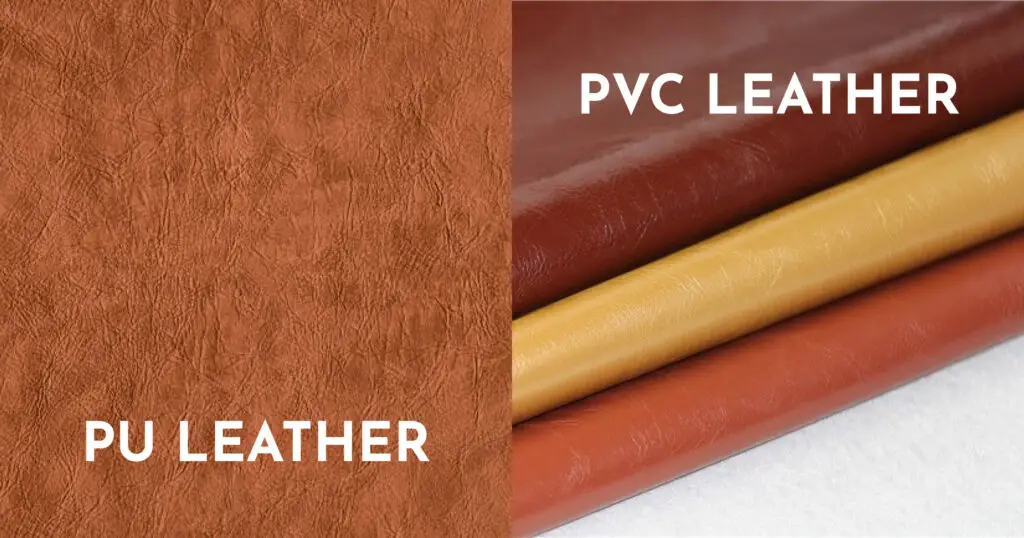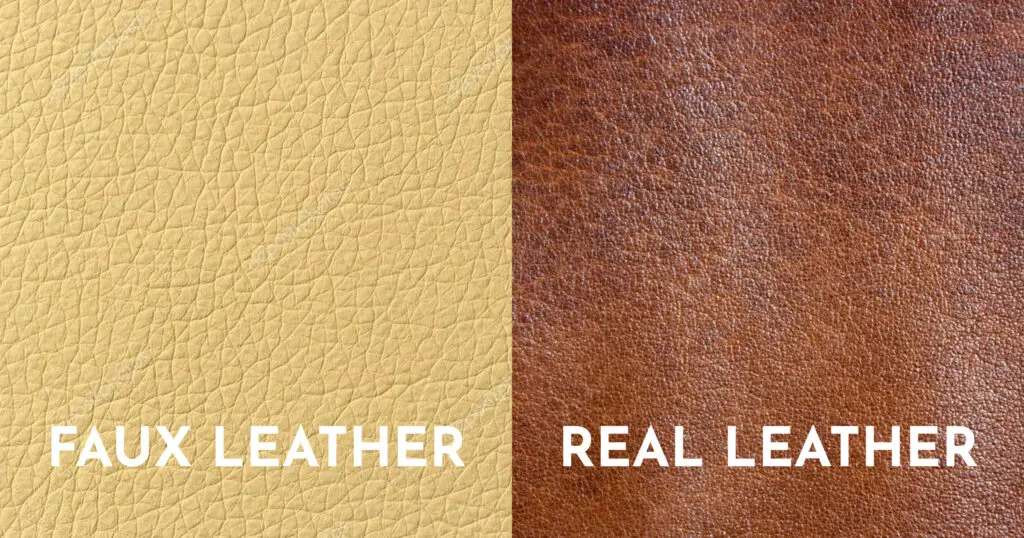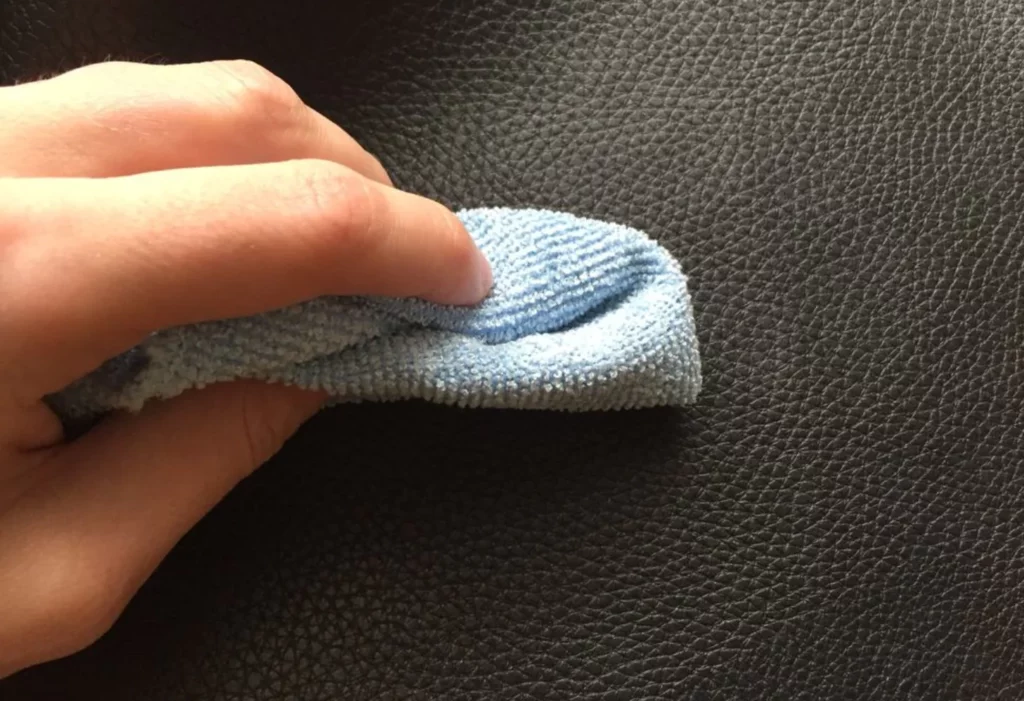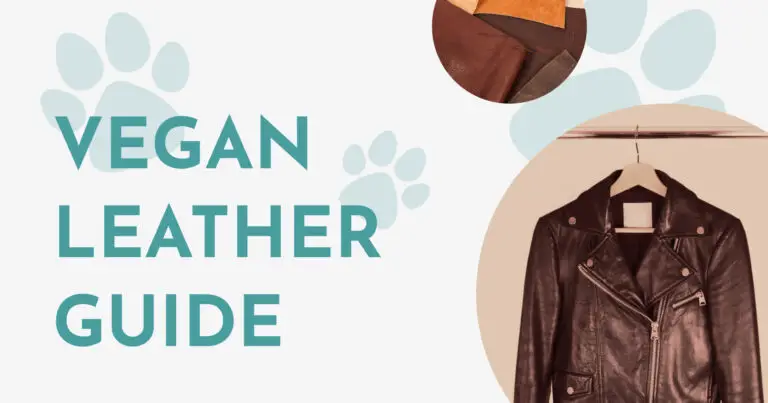I have never owned anything made out of leather, not even before discovering a vegan and cruelty-free lifestyle myself. Wearing the skin of someone else just has not made sense to me – why would anyone want to do it?
No one can deny that leather comes from a shocking amount of animal cruelty. However, the fabric has a long list of positive qualities, such as its flexibility and durability, making it popular among people.
We no longer need to choose between turning a blind eye to the cruelty or the positive characteristics of leather, thanks to endless options of vegan-friendly leather alternatives. Vegan leather, also known as faux leather, is any material that imitates leather but does not come from animals. From synthetic materials like plastic to cleaner natural materials like cork and apple peels – there are several ways to make vegan leather.
Table of Contents
What is vegan leather made of?
As mentioned above, most vegan-friendly leather is made of synthetic materials. Nowadays, the most common faux leather on the market is PU leather – leather made from polyurethane. Another name you can see on the label of your faux leather jacket is PVC leather, which comes from polyvinyl chloride. As both materials are plastic-based, the synthetic leathers are often called pleather.

However, you do not have to replace animal skin with plastic! Vegan leather can come from cleaner and more environmentally friendly resources like plant-based materials. These vegan leather alternatives are more sustainable and don’t produce as many toxic chemicals as synthetic materials.
For example, a Spanish company called Pinatex makes leather out of pineapple – the fiber from pineapple leaves, to be specific. And cork is not just for wine bottles! Several companies use the bark of a cork tree to offer us vegan-friendly alternatives to leather. Some other plant-based resources for vegan leather include mushrooms, cactus plants, and apple skins. With more and more companies coming up with innovative ideas, the available options on the market keep growing!
What is vegan leather used for?
Vegan leather can be handy when manufacturing fashion apparel pieces like jackets, shoes, bags, and belts. And, of course, faux leather can be used in place of traditional leather to make couches, car seats, and so on. So, to put it simply, faux leather can be used instead of regular leather for anything.
With the demand for cruelty-free and sustainable fashion growing, more and more brands are using less leather and moving towards animal-friendly alternatives. Many big names like Chanel and Calvin Klein have banned the use of exotic leather. Recently, Burberry joined that list.
Vegan leather compared to genuine leather

While the leather industry is insanely cruel, there is a reason why the material is so popular. Traditional leather has been around for hundreds of years – it has become a staple material thanks to its many positive qualities. So, how does vegan leather compare?
With so many fake leathers on the market, some are of higher quality than others. But some characteristics are accurate for most vegan leather products.
Artificial leather products have many pros when compared to genuine leather. Fake leathers are much cheaper, making them accessible for most people. As they are typically much thinner than leather made out of animal skin, they are more lightweight, making them more comfortable to wear.
Additionally, synthetic and plant-based leathers have a much lower environmental impact – traditional leather production requires a lot of work and resources. Swapping your genuine leather with a vegan alternative is one of the many eco-friendly changes people can make.
On the other hand, it is nearly impossible to compete with the durability of good-quality animal leather. A leather jacket could serve you for tens of years – a vegan alternative is typically wearable for a few years.
|
Pros
|
Cons
|
Maintaining vegan leather

If you have decided to swap your leather with vegan-friendly alternatives, you might want to know how to take proper care of your new faux leather. Leather is known for its durability, which is hard to match with other materials. However, with the correct maintenance, your new vegan leather can be a long time investment and last you for years.
As faux leather (PU and PVC leather especially) tends to crack quite fast, it’s good to moisturize them now and then. You can use pretty much any oil or leather conditioner for it – I go for baby oil as it works wonders and does not break the bank. Another measure to take to avoid cracking is to avoid harsh sunlight. Too much sun can quickly dry out your faux leather, especially if the quality is low.
I’m happy to say that cleaning vegan leather is incredibly easy. Just give your faux leather jacket or bag a quick wipe with a damp cloth daily to avoid any dirt adding up. A little soap is typically enough to help get stains out, but you can use mild laundry detergent to deal with more stubborn stains. Never throw your faux leather into the washing machine or dryer – unless you want to risk throwing it in the bin after.
Frequently Asked Questions
What is vegan leather made of?
Vegan leather is fake leather-like made from synthetic or plant-based materials instead of animal skins. Most faux leathers come from synthetic materials, but you can also find vegan leathers made from natural materials like cork and pineapple leaves.
Is PU leather vegan?
Yes, PU leather is vegan! While regular leather is made from the hide of an animal, PU leather uses a type of plastic called polyurethane. Always check that the product is 100% PU leather – sometimes, the PU leather is mixed with regular leather.
Is vegan leather durable?
It’s getting easier to find artificial leathers with long durability. The enduringness of faux leather can vary and depends on several factors, such as its material and quality.
How to clean vegan leather?
Cleaning vegan leather is easy! Some soap and a damp cloth are enough for a quick wipe-down now and then. For more stubborn stains, use mild laundry detergent.
Is polyurethane leather vegan?
Polyurethane leather, also known as PU leather, is made of thermoplastic polymer. As it is made from a synthetic material and not the skin of an animal, it’s suitable for people living a vegan lifestyle.
Is vegan leather waterproof?
Faux leather often happens to be waterproof! But it largely depends on what the leather is made of, as every material reacts differently to water. Some vegan leathers are more water resistant than others.



